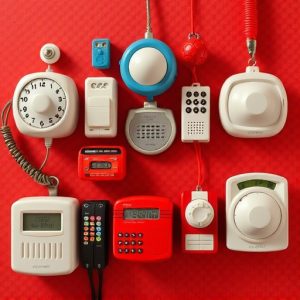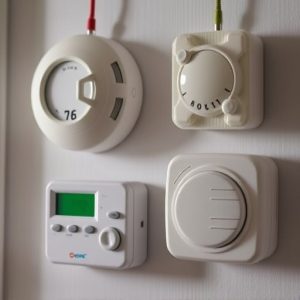Lone Worker Safety: Leveraging Lightweight Alarms & Communication
Lone workers in construction and outdoor recreation face elevated risks due to isolation. Lightweigh…….
Lone workers in construction and outdoor recreation face elevated risks due to isolation. Lightweight personal alarms offer a simple yet effective solution, allowing them to quickly signal for help in emergencies, especially in remote locations. These compact, wearable devices enhance safety for runners and other lone workers by providing quick distress signals and location data to emergency services or designated contacts. Features like GPS tracking and automatic fall detection further improve real-time monitoring. Organizations should prioritize comprehensive training programs and clear communication protocols to ensure the safety of lone workers across diverse settings, including construction sites, forest rangers, and marathon runners.
In today’s digital era, ensuring the safety of lone workers is more critical than ever. This article explores comprehensive solutions for protecting individuals working remotely, focusing on lightweight personal alarms as a core component. We delve into understanding the unique risks faced by these workers and how lightweight personal alarms designed for runners can serve as a reliable safety net. Additionally, we discuss effective communication strategies, training, and preparedness to empower lone workers with the tools they need to navigate potential emergencies.
- Understanding the Risks Faced by Lone Workers
- The Role of Lightweight Personal Alarms in Safety
- Implementing Effective Communication Strategies
- Training and Preparedness: Equipping Workers for Emergencies
Understanding the Risks Faced by Lone Workers
Lone workers, whether they are construction sites staff, delivery drivers, or outdoor professionals like runners, face unique challenges and risks in their daily operations. They often work in isolated environments, away from immediate supervision or assistance, which can lead to potentially dangerous situations. These risks range from accidents, injuries, or even criminal threats. For instance, a runner on a secluded trail might encounter sudden emergencies without anyone nearby to provide aid or alert others.
Lightweight personal alarms for runners and other lone workers are innovative solutions designed to mitigate these hazards. These compact devices offer an easy-to-carry, quick-activation mechanism that allows users to signal for help in case of emergencies. By integrating such alarms into their routines, lone workers can enhance their safety, ensuring a swift response when needed.
The Role of Lightweight Personal Alarms in Safety
Lightweight personal alarms have become invaluable tools, especially in high-risk industries and activities where workers operate alone. For runners and other outdoor enthusiasts who frequently venture into remote areas, these compact devices offer a sense of security. Their primary function is to provide a quick, loud warning signal that can deter potential threats, such as aggressive animals or unsafe situations.
Compared to traditional alarm systems, lightweight personal alarms are designed for ease of use and portability. They are often in the form of small, wearable devices that can be easily carried in a pocket or attached to clothing. This feature ensures that workers or runners have quick access to the alarm during emergencies, making them highly effective tools for enhancing safety without compromising mobility.
Implementing Effective Communication Strategies
Implementing effective communication strategies is a critical aspect of safety alert systems for lone workers, especially those engaged in outdoor activities like running. Lightweight personal alarms designed specifically for runners play a pivotal role here. These devices, often compact and easy to carry, serve as a worker’s lifeline, enabling them to quickly send out distress signals in case of emergencies. With the push of a button, these alarms can alert emergency services or designated contacts, providing essential location data, ensuring swift response times.
Additionally, integrating communication features like GPS tracking and automatic fall detection further enhances safety. Such technologies enable real-time monitoring, allowing supervisors or loved ones to track an individual’s progress and detect any unexpected incidents promptly. This proactive approach to communication can significantly mitigate risks faced by lone workers, be they construction sites, forest rangers, or even marathon runners.
Training and Preparedness: Equipping Workers for Emergencies
In today’s digital era, ensuring the safety of lone workers is more crucial than ever. Training and preparedness are key components in this regard. Organizations should invest in comprehensive training programs that educate workers on recognizing potential risks and responding to emergencies effectively. This includes teaching them how to use safety alert systems, such as lightweight personal alarms for runners, which can be easily carried and activated during an emergency. By equipping workers with these tools and knowledge, they become better equipped to handle unexpected situations, increasing their chances of survival and swift assistance.
Additionally, regular drills and simulations can help lone workers stay calm under pressure. Practicing emergency procedures allows them to familiarize themselves with the features of their safety devices, such as lightweight personal alarms for runners, ensuring they know exactly when and how to use them. Preparedness also involves creating clear communication protocols, so assistance can be requested promptly if needed. These proactive measures contribute significantly to the overall safety of lone workers in various environments.
Lone workers face unique challenges, but with the right safety alert systems, these risks can be significantly mitigated. Integrating lightweight personal alarms, efficient communication strategies, and comprehensive training empowers individuals to protect themselves in isolated environments. By adopting these measures, we can ensure that lone workers, especially runners, stay safe while going about their tasks, ultimately enhancing their peace of mind and well-being.


